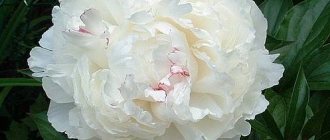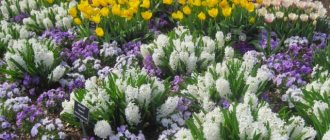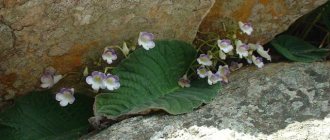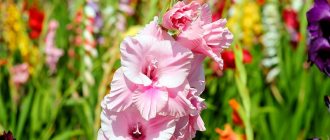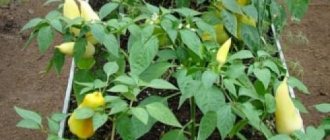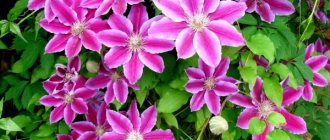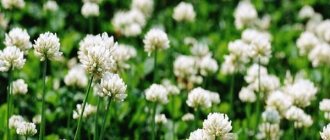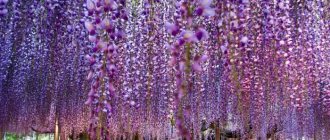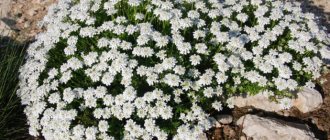The first flowers of spring in the forest and meadows
The first thawed patches have just appeared in the forest, and life invisible to the eye is already boiling on them - various larvae and insects have awakened in the earth, the earth itself is ready to accept into its bosom every living creature, every smallest blade of grass. And now, among the islands of porous snow, the boldest flowers begin to appear - snowdrops. We usually call all spring primroses snowdrops, although the true snowdrop - galanthus - is only one of the many types of spring primroses. This is the very first flower in spring, and it does not grow in all regions. The flower looks like a small white lantern on a thin stem. It can withstand temperatures down to -10 degrees. Only in such cold does it become fragile, like thin glass. But as soon as the sun comes out, galanthus comes to life.
Spring flowers: galanthus
One of the earliest and cold-resistant garden flowers is galanthus (snowdrop). This is a beautiful tender perennial bulbous plant that belongs to the Amaryllis family. One of the first to appear in gardens. Often the snow cover has not yet completely melted, but these primroses are already growing in thawed patches. Tolerates spring cold and frost well.
The plant produces heads on low peduncles, the length of which reaches 15 cm. Interestingly, the leaves and arrows with buds grow simultaneously. The drooping flower heads are small (3 cm in diameter), mostly white with a light, subtle scent or no scent at all. Flowers are bell-shaped or teardrop-shaped.
The plant grows in well-moistened soil. If there is insufficient humidity, it develops poorly and does not bloom. But when moisture stagnates, galanthus bulbs die, so the soil must be loose and permeable.
Sunny and shaded areas are suitable for snowdrops. To ensure that the snowdrop produces abundant color, the soil is fertilized with compost before winter. Propagated by separating bulbs or seeds.
Photo: pixabay.com: UGC
Delicate snowdrops - the awakening of nature
The Slavic legend says how one day the old woman Winter decided not to let Spring come to earth. The flowers drooped from fear, one snowdrop was not afraid and opened its petals. The sun saw him, warmed everything on earth with its warmth and cleared the way for the beautiful Spring. Since then, spring and snowdrops have been inseparable.
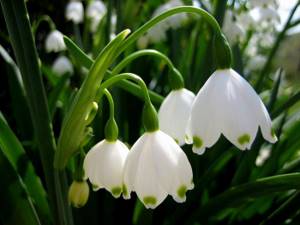
The first flowers of spring, which in many areas are also called snowdrops, are nothing more than dream grass, corydalis or lumbago. They say that once upon a time the leaves of the lumbago were so large and wide that Satan, who was expelled from paradise, could hide behind them. But the Archangel Michael, discovering his hiding place, threw an arrow at him. And the leaves of the dream grass remained shot through - cut into thin slices. The lumbago also blooms even at sub-zero temperatures. The whole secret of this, it turns out, is in the cup of the flower. It, like a concave mirror, collects the sun's heat. And the temperature inside the cup is +8 degrees.
Spring flowers: lily of the valley
Lily of the valley is a perennial flower of the Asparagus family. The bushes consist of a pair of wide leaves, from the center of which a peduncle grows. It bears many small bell-shaped flowers with a pleasant, pronounced scent. The color of the flower is white or slightly yellowish. Lily of the valley opens flowers in May. Flowering lasts a maximum of three weeks.
The plant loves soil with high humidity and grows well in shaded areas. The composition of the soil does not matter, although lily of the valley prefers neutral loamy soils.
Lilies of the valley require abundant watering and require double fertilization. The first feeding is done at the end of autumn. Then compost is used as fertilizer. The second feeding is carried out in the spring. To do this, mix potassium (40 g) and phosphorus (100 g) fertilizers.
The gardener should remember that this plant is poisonous. Even the room where cut flowers are kept must be constantly ventilated.
Photo: pixabay.com: UGC
What other flowers appear first in spring?
A little later than the snowdrop, the sun-yellow spring adonis, or adonis, blooms. In some areas it is also called starodubka.
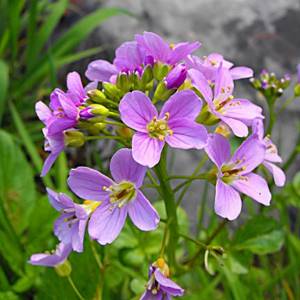
In Russian villages, spring is the time when poultry begins to hatch their chicks. At this time, it was strictly forbidden to bring home both adonis and dream grass; it was believed that these flowers could harm future bird offspring.
The same first flowers of spring have different names in different regions. This is due to the fact that the people, not knowing the botanical scientific names, gave the flowers their own names. The very first flowers in spring:
- vernal;
- anemone;
- Potentilla gossamer;
- coltsfoot;
- dandelion;
- lungwort;
- grouse;
- periwinkle;
- buttercup;
- viper onion;
- wild iris (in some rural areas it bears the poetic name “cuckoo tears”, or “pikulki”).
The first flowers of spring do not indulge in the luxury of their bloom for long. A few days will pass, and they will shed their petals and go into a state of rest, or summer hibernation. During this time, they accumulate nutrients in the roots, often in the bulbs, which will give them the strength to bloom before anyone else next spring.
Primrose and crocus – spring rebirth
In summer cottages and gardens, perennial primroses, brothers of forest flowers, only cultivated, are also the first to wake up. What flowers appear first in spring in garden plots?
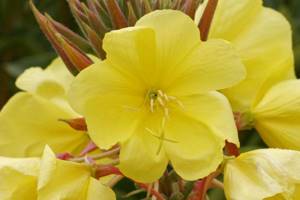
First of all, this is a real primrose - primrose. Its name is translated from Latin - “first”. Primrose blooms in all the colors of the rainbow. People call it rams or golden keys. They say that these “keys” open the door to summer.
There is also a superstition that primrose can open hidden treasures. A maiden dressed in white robes and holding a golden key in her hand allegedly sometimes appears in the fields. And if you pick a primrose with her, the flower receives a magical gift of finding underground and opening treasures.
And the royal primrose, which grows on the slopes of volcanoes, blooms shortly before a volcanic eruption, thereby warning people of danger.

Simultaneously with the primrose, and sometimes even before it, the lovely crocuses open their blue eyes. True, there are crocuses of other colors - purple, white and even striped. Another name for crocus is saffron. That's what they call it in Crimea. Previously, in nature, these flowers were only yellow. This flower is mentioned in the Old Testament and in ancient medical treatises. It turns out that saffron is one of the oldest spices.
True, in our country it is not crocuses that are called saffron, but marigolds. And they bloom much later, already at the height of summer.
Spring flowers: whiteflower
This bulbous perennial belongs to the Amaryllis family. Whiteflower can have spring and autumn flowering periods.
Flowers (spring) in April produce belt-like linear leaves. At the same time, buds emerge. The height of spring flower stalks slightly exceeds the length of the leaves and reaches 40 cm. The flowers are broadly bell-shaped, drooping, solitary or collected in few-flowered umbellate inflorescences. The petals of the plant head are predominantly white, sometimes pink. There is a yellow or green spot at the top of the petals. The blossomed flower reaches 3 centimeters. Flowering time is about 10–14 days.
Whiteflower loves well-lit and semi-shaded areas. The plant is drought-resistant and prefers loose, permeable soils. Propagated by bulbs and seeds. Once every five years it needs thinning and planting. Despite the fact that the flower tolerates drought well, the bulbs should not be kept out of the ground for more than seven days: they may die.
Photo: pixabay.com: UGC
Strict handsome tulip
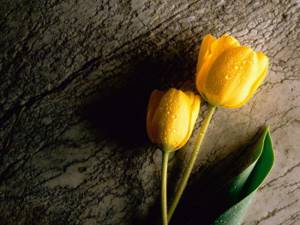
He looks strict, but the color of his outfit is sometimes the most frivolous! There is an ancient legend about the tulip. It was as if the bud of a yellow flower contained happiness, but no one was able to get to it because the flower did not open. But one day a child picked up this tulip. His sinless soul, carefree laughter and sunny childish joy performed a miracle - the bud opened. In the East, the yellow tulip is considered a flower of happiness, although we have a different interpretation. But red tulips are everywhere - a symbol of passionate love. Now many varieties of tulips have been developed. There is even an exotic black flower.
Spring flowers: hellebore
This evergreen shrub is one of the most popular garden plants. Hellebore blooms bright buds in early March and can withstand frosts down to -6 ° C without problems. The variety Helleborus niger ("Christmas rose") blooms in mid-winter.
The plant has basal leaves and large flowers with five petals. The color of the petals is bright and varied. These first spring flowers come in peach, burgundy, dark red, yellow, plum and even almost black. Often the surface of the petals has a greenish tint, which becomes more pronounced as it ages. The inside surface of the sepals may have dots, veins, purple or reddish spots.
Hellebore prefers to grow in partial shade. An excellent planting site will be the soil under fruit trees. Fallen leaves will provide the necessary nutrition and act as natural mulch. The plant prefers well-drained, loose, moist soils.
Propagated by dividing the bush and seeds. Hellebore does not like frequent transplants, but if it is not disturbed, it grows magnificently in one place for a long time (about 10 years).
Photo: pixabay.com: UGC
Caution: Hellebore is poisonous. The rhizomes contain glycosides and alkaloids.
Hyacinth – the flower of fidelity, happiness and sorrow
Another spring flower is hyacinth. Its multi-colored sultana inflorescences appealed to many gardeners. Hyacinth is a flower of fidelity, happiness and sorrow. And, of course, he has his own legend. The god Apollo had a favorite on earth - a simple boy named Hyacinth. They often started sports competitions. Once Apollo threw a disk, and it flew towards Hyacinth. Splashes of the young man's blood sprinkled the grass, where lilac-red flowers soon grew, which the ancient Greeks called hyacinths.
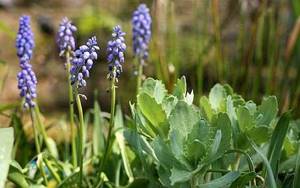
The flower quickly spread throughout the world and, thanks to its beauty and aroma, became a favorite in many countries. Only in France in the past was hyacinth used “for showdowns” in palace intrigues. Flowers sprayed with poison were placed in the victim's boudoir. The poison, together with essential oils, penetrated the human body and killed him.
If you look closely, you will see that the hyacinth inflorescence consists of many miniature lilies. During its “cultivation,” the range of colors and shades expanded, and terry hyacinth was bred through selection.
How to arrange a spring bouquet
You can complement your spring bouquet with beautiful packaging or decorative elements.
Interesting ideas for decorating a bouquet:
- An arrangement in a hat box or wicker basket looks beautiful and elegant. Such a gift can be presented for any occasion. A mono-bouquet or a combined composition of 2-3 types of flowers and greenery will look great. You can decorate a box or basket with ribbons, a bow or beads.
- Composition of growing flowers in a decorative box. The size, shape and material of the box can be chosen depending on your preferences. The advantage of a bouquet in a box is its naturalness; the composition will gradually bloom, delighting the recipient. You can plant several types of bulbous flowers in a box. The composition is decorated with moss, tree bark, sea pebbles and decorative animal figurines.
- Burlap and mesh will help highlight the natural beauty of a spring bouquet. An organic composition will be made from irises or daffodils and greenery. You can decorate the bouquet with ribbons, beads or a bow.
- You can simply tie a spring bouquet with a silk or lace ribbon - it will turn out simple and elegant.
- Light firth or sisal will highlight the natural beauty of spring flowers. The fabric will not weigh down the composition, but will add lightness and airiness. You can decorate the composition with beads, rhinestones, ribbons, threads or twine.
Simple recommendations will help you create and arrange a beautiful spring bouquet for any occasion or just for no reason. Give joy to your loved ones!
Narcissist
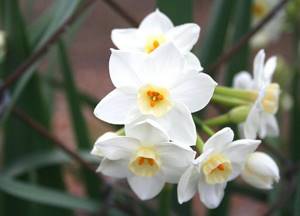
Some peoples consider the flower a medicinal plant. Everyone is well aware of the legend about the young man Narcissus, who fell in love with himself after seeing his reflection in a transparent stream. It is this legend that is to blame for the fact that the narcissus has long been called the flower of narcissists. Even flowers' appearances can be deceiving. The elegant appearance and delicate petals of the narcissus mislead many people and make them consider it fragile and vulnerable. Nothing like this! This flower is unpretentious, strong, and in the wild can successfully resist various rodents.
Lilies of the valley – Happy May hello
Lily of the valley is a surprisingly cute spring flower. White bell flowers, as if made of fine porcelain, bloom on thin stems among large wide leaves. According to Ukrainian legend, the flower grew on the spot where the tears of a maiden who was waiting for her betrothed after a long campaign fell.
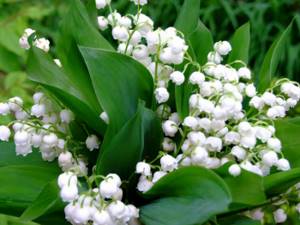
The fact that almost every spring flower is associated with some kind of legend suggests that flowers have always had a special meaning for people. Now that the time of superstition is a thing of the past, spring flowers simply bring joy after the winter cold, lift your spirits, and symbolize a new awakening of nature and innermost desires.
The first flowers of spring are so good because they bloom, replacing each other, like models on a catwalk. Their bright outfits captivate the eye and fill the air with incredible delicate aromas. Flowers seem to say: “Wake up! Spring came!" And although their flowering does not last long, the smell and large amount of pollen attract insects, primarily bees. The first spring flowers are almost all honey plants.
Now we know what the first flowers bloom in the spring in the wild and in the flower beds of gardens and vegetable gardens.
Spring flowers: muscari
This lush, showy, medium-sized spring bulbous flower belongs to the Asparagus family. Muscari, also known as mouse hyacinth, is an easy-to-grow, fast-growing plant. Flowering times vary among varieties, but the earliest ones begin to bloom in late April. The flowering time of mouse hyacinth is about a month.
The color is located on high peduncles, which can reach 60 cm. On the upper part of the peduncle there are inflorescences, which are collected in brushes and consist of a large number of small flowers of blue or purple color. Basal fleshy leaves (2–7 pcs.) 10–17 cm long are collected in a bunch.
The plant is not demanding on lighting, composition and quality of soil. Moreover, growing conditions do not affect the size and amount of color. Muscari reproduce by babies, which grow in large numbers every year. In a place where only one flower was planted, after a short time many new shoots will appear.
Caring for the plant consists of moderate regular watering and the only feeding per year. Before winter, muscari are fertilized with compost, and in spring - with complex mineral fertilizer. The gardener can choose any of the proposed methods. During the dormant period, watering is stopped.
Photo: pixabay.com: UGC
Mimosa - touchy and cowardly
Do you remember, in the spring, what are the first flowers that appear on sale everywhere by March 8th? Impatiens mimosa, of course! As soon as you touch the fluffy beauty, she will immediately shudder and hide her leaves. Here we are talking about living, growing mimosa, and not about those bouquets that are sold on every corner in the spring. They say that mimosa reacts the same way to a crafty person. She is also “afraid” of being in the dark. Despite all this, mimosa is not a very fastidious plant, but it loves warmth very much, which is why it grows only in the south, in warm regions.
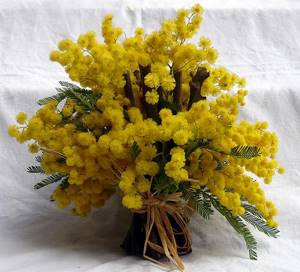
Did you know that mimosa is a type of acacia, and its correct name is “silver acacia”?
Spring has come, it's time to bloom. It's time for the air to be filled with spring aromas. Each flower looks at us as if it wants to say something. Perhaps if you listen carefully, you can understand what the flowers are saying?
Spring flowers: fragrant violet
Violet is a perennial, winter-green, beautiful herbaceous plant that belongs to the Violet family. The flower does not have a leafy stem. Peduncles and basal leaves grow from numerous rosettes that take root in the nodes of the shoots. The leaves are located on long petioles. The leaf blade is round-oval. The entire surface of the plant is densely pubescent.
The maximum flower diameter is 2.5 cm. The buds are located on separate peduncles. The petals are predominantly purple and lilac. The plant has a pronounced fragrant aroma. The violet reacts to weather conditions: in inclement weather the heads close.
Violet blooms twice a year. In April, the first flowering begins, which lasts 20–25 days. The plant loves well-lit areas. The flower prefers fertile, light, loose soil that drains well. The plant needs good moisture, but does not tolerate stagnant water.
Fragrant violet reproduces by seeds and vegetatively. In the second method, side shoots with relatively small rosettes are planted.
Photo: pixabay.com: UGC
